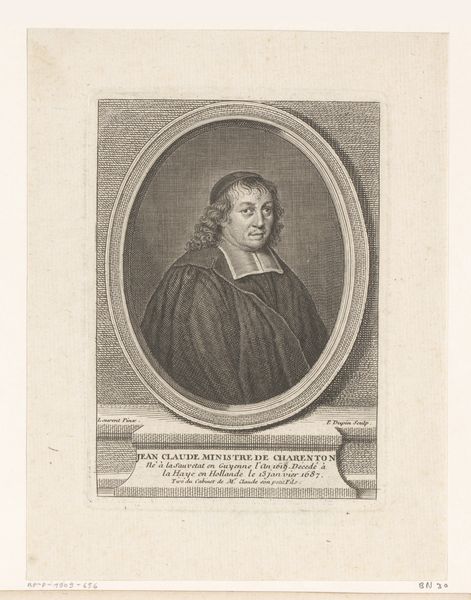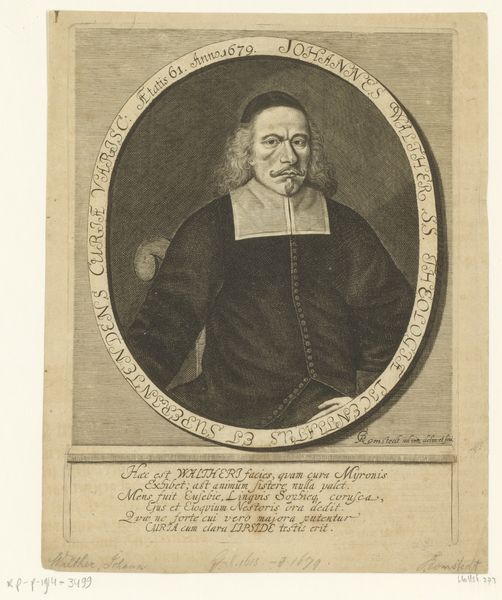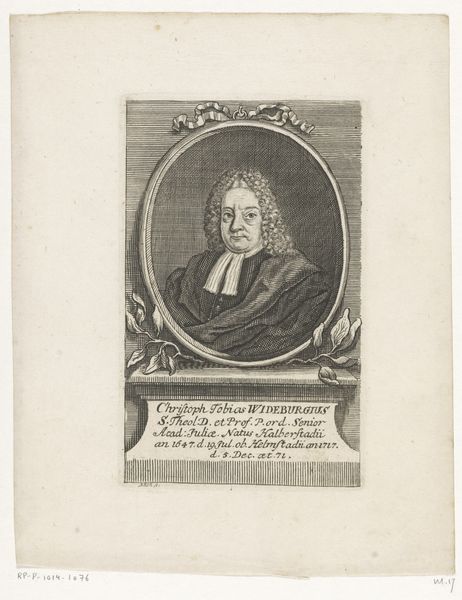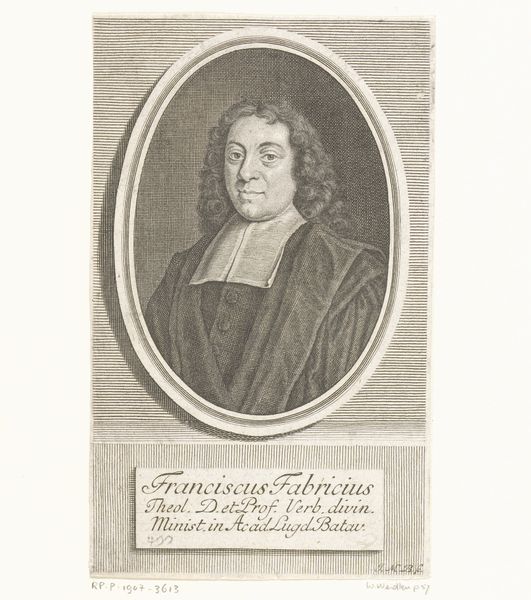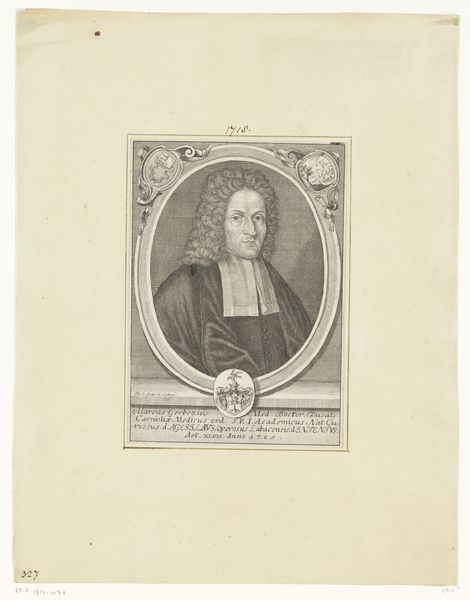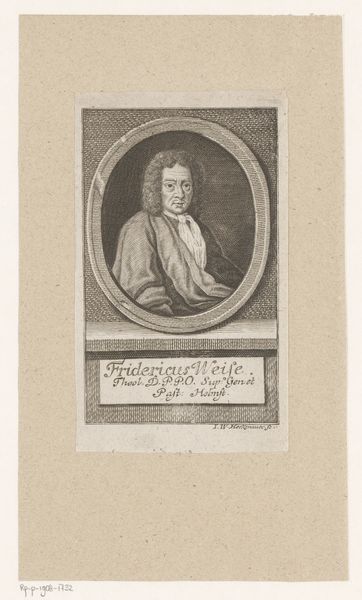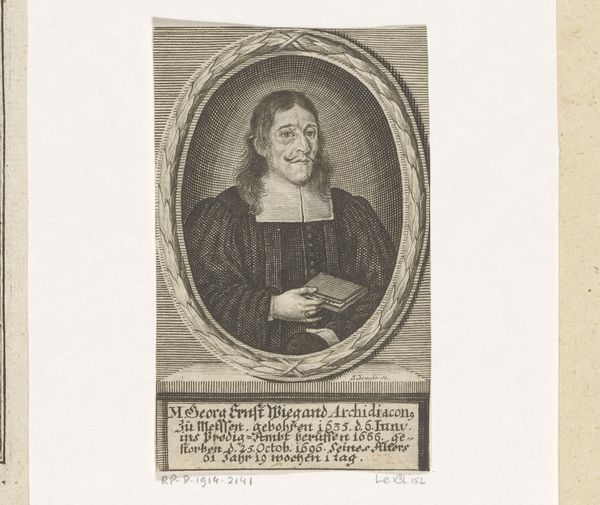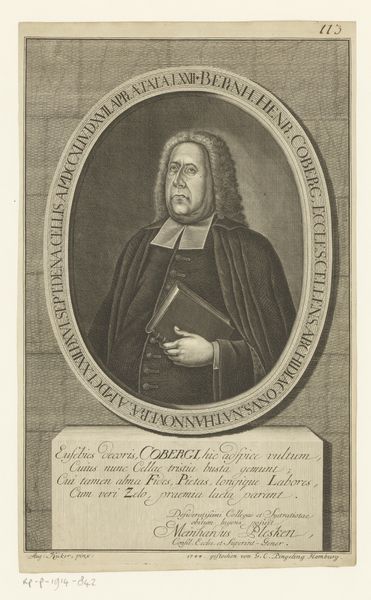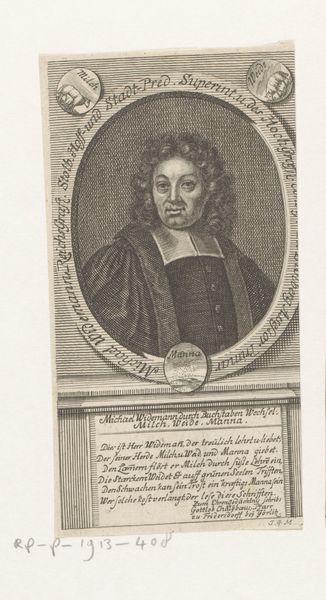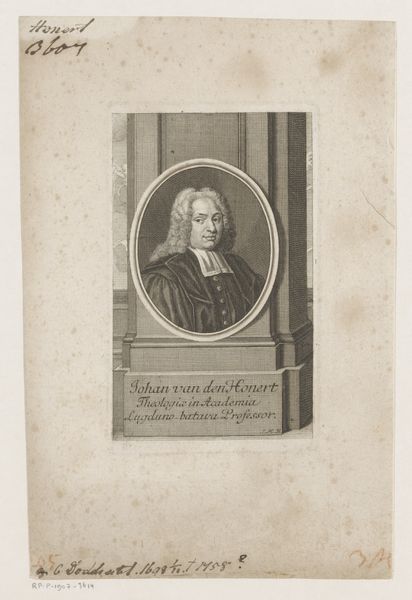
engraving
#
portrait
#
baroque
#
old engraving style
#
engraving
Dimensions: height 160 mm, width 104 mm
Copyright: Rijks Museum: Open Domain
Curator: Immediately, I’m drawn to the intricacy, you know? All those fine lines composing the textures—it's delicate but firm. There's a stillness, a quiet gravity to the fellow. Editor: Yes, that stillness speaks to the era. This is an engraving from 1694, created by Moritz Bodenehr, and it’s titled "Portret van Johannes Seebisch.” It’s now held in the Rijksmuseum. It depicts Seebisch, a church official, within a formal oval frame set against a rectangular field with Latin inscriptions. Curator: Baroque formality indeed, with just a hint of impending doom! I find the level of detail impressive, and a bit intimidating. There is this man staring out at you, but it's like he knows so much more, hidden behind those deep-set eyes. Editor: Engravings allowed for the widespread dissemination of portraits during that time, bolstering reputations and projecting power, whether religious or secular. This image is not just about depicting Seebisch, it’s about cementing his presence and authority. Look at the detailed rendering of his clerical robes, every fold asserting dignity. Curator: And the book he's holding, a subtle declaration of intellect and dedication to his vocation. It seems every detail in this work screams: authority, power, religion! Even the oval frame contains him somehow; still I find it is not without warmth. Editor: Exactly, the oval frame itself contributes. Ovals are perceived to soften severity while still providing the framework for an image that conveyed specific messages about faith, learning, and station within a highly structured society. The inscription adds a layer too—it's both descriptive and celebratory. Curator: Ah, yes the frame makes him the center. So much intention put there. In my own artistic world, these rigid approaches give me hives, but you can't help admiring the devotion! Editor: Agreed! Works like these are time capsules. We get to see the visual language and priorities of the period so clearly represented, helping us connect art to its historical moment. Curator: So next time when someone says “Old Art”, perhaps they see what made the work powerful and perhaps moving. That we are able to think beyond its purpose, and allow room to create something of their own as well.
Comments
No comments
Be the first to comment and join the conversation on the ultimate creative platform.
